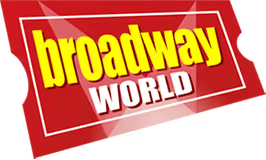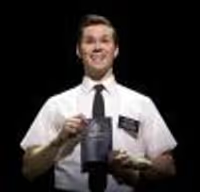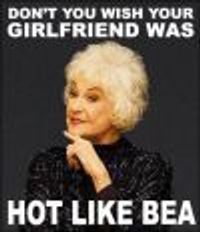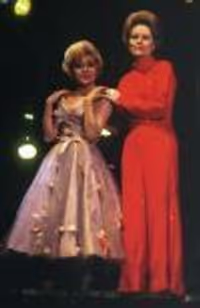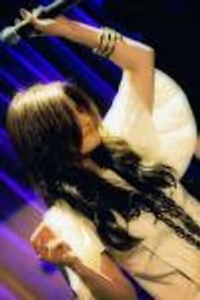"Formulas" for musical construction
Franz
Swing Joined: 6/23/06
#0"Formulas" for musical construction
Posted: 6/23/06 at 2:17am
At the risk of asking too large a question ...
I have read with interest the discussion about the "11 O'Clock number". Are there other standard ("formulaic", for want of a better word) elements to the construction of a Musical? I mean, apart from the obvious Act One Finale, Act two Opener and Act Two Finale.
I've read lots of books about particular musicals, and about the art of the Music-Theatre performer, but are there any books or websites that people can recommend which deal specifically with the construction of Musicals? - I mean "the formula", this whole business of 11 O'clock numbers, etc. etc.
Updated On: 6/23/06 at 02:17 AM
shesamarshmallow
Broadway Legend Joined: 3/23/06
#1re: 'Formulas' for musical construction
Posted: 6/23/06 at 3:48amWell, there's the "I Want" number, which is generally the third or so number in the show. Popular examples include Purpose, The Wizard and I, I Want to Be a Producer, Great Big Stuff and One Song Glory.
#2re: 'Formulas' for musical construction
Posted: 6/23/06 at 3:59am
Yeah, The "I want" song is very important, as it keeps the audience pretty gripped from the start.
Also another thing, you should use a particular theme throughout the whole musical. I'll use wicked for example.
"No-one mourns the wicked" is reprised many times throught the show. It starts the show, a small reprise ends the first act (As part of defying gravity). Then, reprises open the second act and also close it.
Then near the end there should be a big turning song that changes everything (Point of no return, No good deed, Madman) just before the big emotion at the end (The final laire scene, For Good and Tell me its not true).
I haven't seen that many shows but i think these are qualities all of them need.
Sant
Broadway Legend Joined: 9/12/04
#3re: 'Formulas' for musical construction
Posted: 6/23/06 at 6:41am
Also, the supporting/featured actress usually has one of the best numbers of the show. Like
- "Memory" (CATS)
- "Bill" (SHOW BOAT)
- "Something Wonderful" (THE KING AND I)
- "Climb Ev'ry Mountain" (THE SOUND OF MUSIC)
- "Now That I've Seen Her"(MISS SAIGON)
- "Your Daddy's Son" (RAGTIME)
- "Another Suitcase In Another Hall" (EVITA)
- "U.N.C.O.U.P.L.E.D." (STARLIGHT EXPRESS)
- "Oklahoma?" (DIRTY ROTTEN SCOUNDRELS)
- "Adelaide's Lament" (GUYS AND DOLLS)
- "When You're Good To Mama" (CHICAGO)
Updated On: 6/23/06 at 06:41 AM
#4re: 'Formulas' for musical construction
Posted: 6/23/06 at 7:30am
That old tried-and-true formula for romances in books and movies is the same for musicals:
boy meets girl
boy loses girl
boy gets girl
There's also often what I call the "secondary" romantic couple. They're usually present as comic relief or to highlight a social issue or conflict, such as racism or anti-Semitism (Showboat, Cabaret), class-caste differences (The King and I), or the tragic realities of war (Sound of Music). Lt. Cable and Liat in South Pacific encompass reflect of all of the above.
#5re: 'Formulas' for musical construction
Posted: 6/23/06 at 12:05pmAlso, the show must get much darker in Act 2 (both plotwise and musically)
All the lights are misty in the river
In the darkness, the trees are full of starlight
And all I see is him and me forever and forever."
#6re: 'Formulas' for musical construction
Posted: 6/23/06 at 12:36pm
"Well, there's the "I Want" number, which is generally the third or so number in the show. Popular examples include Purpose, The Wizard and I, I Want to Be a Producer"
Sorry, just have to correct you there. The "I Want" song, per Stephen Schwartz's definition on a website, is usually the second/third of the show. "I Wanna Be a Producer" is considered the production number. That show's "want/character" song is "The King of Broadway", exactly the second song in the show.
Gothampc
Broadway Legend Joined: 5/20/03
#7re: 'Formulas' for musical construction
Posted: 6/23/06 at 12:52pmChanging the key in the middle of a song brings a change in the audience's emotions. It transforms a dull song into a power ballad (examples: "This Is the Moment" "Memory")
#8re: 'Formulas' for musical construction
Posted: 6/23/06 at 2:03pm
Most musicals that follow "The Hammerstein Method" as I call it usually follow have 2 male principals and 2 female principals. Usually, one male and one female are highly romantic and dramatic (ex. Julie and Billy Bigelow in "Carousel", Curly and Laury in "Oklahoma!") and the other couple is usually funny (ex. Ado Annie and Will Parker in "Oklahoma!"). The romantic couple is usually considered the "leading players" of the show, but the comic couple has just as much to do. Musicals such as "Guys and Dolls", "Brigadoon", "The Music Man" (many different comic couples though), "West Side Story" and others follow this. A recent example could be "Dirty Rotten Scoundrels" although all of the couples are highly funny.
However, a very Hammerstein-ish trademark is the strong, female figure. For example- Nettie, Aunt Eller or Bloody Mary.
#9re: 'Formulas' for musical construction
Posted: 6/23/06 at 2:22pmIs it bad if the turning point/ 11 o clock number belong to a featured actress and not the leading charector cuz I wrote a show and it sort of happens like that.
"I am sorry but it is an unjust world and virtue is only triumphant in theatricle performances" The Mikado
Gothampc
Broadway Legend Joined: 5/20/03
#10re: 'Formulas' for musical construction
Posted: 6/23/06 at 2:29pm
"the strong, female figure. For example- Nettie, Aunt Eller or Bloody Mary."
Don't forget Mother "Climb Ev'ry Mountain" Superior.
Gothampc
Broadway Legend Joined: 5/20/03
#11re: 'Formulas' for musical construction
Posted: 6/23/06 at 2:32pm
"Is it bad if the turning point/ 11 o clock number belong to a featured actress and not the leading charector cuz I wrote a show and it sort of happens like that."
It depends how it is written. I think that was part of jv92's point. In the Hammerstein shows, the 11 o'clock number belonged to the strong, female figure, but they were all supporting actresses.
thevolleyballer
Broadway Legend Joined: 9/29/04
#12re: 'Formulas' for musical construction
Posted: 6/23/06 at 2:35pm
"Is it bad if the turning point/ 11 o clock number belong to a featured actress and not the leading charector cuz I wrote a show and it sort of happens like that."
Well, though I disagree that HAIRSPRAY's 11 o'clock number is "I Know Where I've Been," it seems to be the consensus that it is, and having said that, it's sung by Motormouth Maybelle. So if HAIRSPRAY has been successful with that, then I'm sure yours is fine as well. :)
#13re: 'Formulas' for musical construction
Posted: 6/23/06 at 3:09pmalright good. Cuz in my show the song is not only imo the best one i wrote but it wouldnt work if the lead sang at this point but I was uncertain.
"I am sorry but it is an unjust world and virtue is only triumphant in theatricle performances" The Mikado
#14re: 'Formulas' for musical construction
Posted: 6/23/06 at 3:14pm
"Changing the key in the middle of a song brings a change in the audience's emotions. It transforms a dull song into a power ballad (examples: "This Is the Moment" "Memory")"
Some could argue that this sort of modulation is a bit of a cheap trick. There is such thing as a smart use of key changes. One of the best examples I can think of is "Awaiting You" from Myths and Hymns and "Epihpany" from Sweeney Todd. I suppose that's very advanced, though.
Updated On: 6/23/06 at 03:14 PM
Videos
